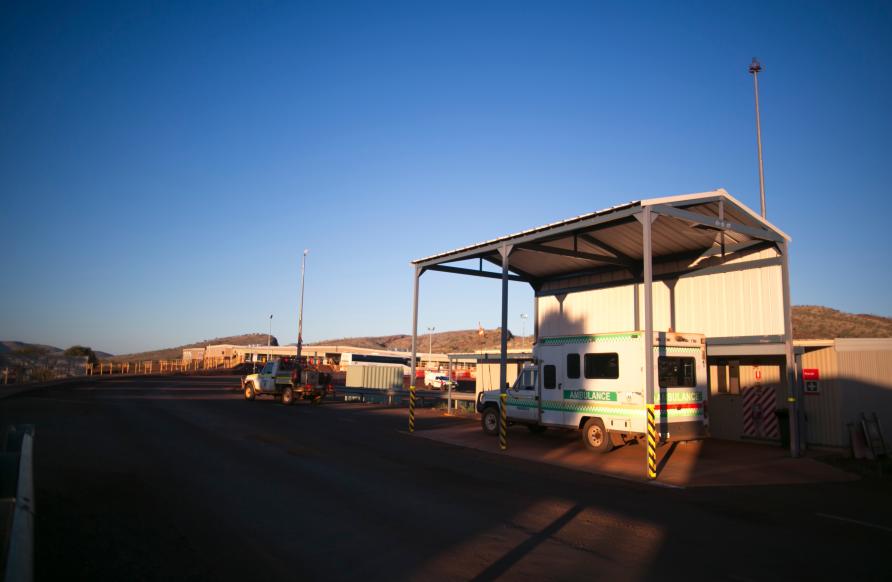Attracting and retaining Australia’s rural health workforce

Australians in rural and remote areas have poorer health outcomes than people in metropolitan areas, and severe workforce shortages are a major contributor – particularly when it comes to nurses and allied health workers.
Attracting and retaining experienced and skilled health professionals to work and live in rural areas is a global issue.

In Australia, since early 2000, state and Federal governments have invested in policies and strategies to address this “wicked” problem.
These have included increasing the number of funded university training places, setting quotas in health courses for rural background students, and offering financial incentives and supports to encourage qualified health professionals to ‘go rural’.
And while there has been some improvement in the size of Australia’s rural health workforce, especially in the number of doctors working in primary care settings, serious shortages continue, especially in allied health and nursing workforces.
My research has found that there needs to be a shift in focus to attract, recruit and retain allied health and nursing professionals to rural and remote areas. Personal satisfaction is a major factor in their decision to stay or leave, and life stage, rather than rural background, is the major determinant of staff turnover.
To date, the majority of rural health workforce research has focused on recruitment influences in the medical workforce. This shows strong evidence that a rural background, positive clinical and educational experiences in rural settings, and extended cultural immersion in rural communities positively influence medical graduates to ‘go rural’.
However, allied health and nursing professionals have different educational pathways and influences that attract them to rural areas and keep them there.
The research on how to retain nursing and allied health workers in rural areas is limited and has mostly focused on job satisfaction and the extent of professional training and career-building opportunities.

Psychosocial and personal factors have been ignored, or they have been identified with little exploration of how they influence retention.
Why do they stay?
I interviewed nurses and allied health professionals in nine rural and remote state public health services in New South Wales. They included ‘locals’ who had grown up in the town or area they were working in, and ‘newcomers’ – non-locals with few or no pre-existing social bonds.
Among the newcomers, feelings of alienation and social disconnection, especially in the first year of moving to a rural town, were common. This was especially true for new graduates, single people and those with no prior experience of rural ‘Aussie’ culture.
People aged mostly in their early-to-mid-20s were the most likely to have plans to leave, usually after a couple of years, regardless of their background.
These younger early-career health professionals planned to travel and seek new adventures and wanted to extend their social networks. Among younger non-locals many had always planned to return home.
But a sense of belonging and integration into the community increased over time and, after three years, non-locals were as likely to stay in an area as locals. The stayers with no plans to leave were usually in middle adulthood and were raising families or planning to start a family soon.
For the stayers who were non-locals, the decision to stay often involved weighing-up the town’s ability to meet their, and any significant other’s, future life aspirations.

Among locals this decision-making process was far less conscious.
The stayers, especially allied health professionals, commonly described their public sector health position as the best employment available in town – especially in terms of remuneration and parental leave entitlements.
A better way of retaining workers
To design more effective retention policies, we need to consider the retention of rural allied health and nursing workers in a more nuanced way, that reflects people’s stage of life. We also need to better understand the social processes that health services and rural communities can influence, like social connection.
This information can be shared with managers and executive staff in rural public health services to help develop realistic retention goals and strategies to improve personal satisfaction appropriate to individuals’ lives and career-stage.
I have developed a ‘whole-of-person’ retention framework that outlines supports to improve professional and personal satisfaction of health professionals across three key life domains – organisational, career building alongside community and place.
This is currently being used to inform an allied health workforce retention improvement project in partnership with two rural public-health services in Victoria – a small rural service and a regional service. Each health service is implementing a set of recommendations, as well as tailored strategies informed by interviews conducted with staff and other key people.
For example, we are developing an allied health early career support program for the first three years after graduating. It includes providing a comprehensive orientation with discipline specific supervision, and offering a new graduate training support program to encourage career development.
Career guidance and discipline-specific training for more established professionals is also important, as is social support in the workplace.

In both rural public health sites, loneliness and social isolation are very common among non-locals and access to social connection supports at work and in the community were weak.
Both health services are working on strategies to welcome non-local newcomers more warmly, provide timely assistance to settle them in, offer support finding suitable accommodation, and provide regular opportunities for social connection.
Some examples of new social strategies are a ‘buddy program’ with volunteer older workers and establishing early career support groups in the workplace.
In the town the regional service operates in, the local council has gathered major employers and community groups to work together to develop a social connection strategy for all non-local newcomers.
In both sites, connection has been made with young professional groups and they are offering regular activities like barefoot bowling, film nights and annual balls to workers in the town aged in their 20 to 30s.
To retain staff, policy makers need to move beyond a focus on attracting and recruiting health workers and reliance on rural background and rural clinical educational experiences.
Retention needs to become a policy focus and rural health services need to be supported to work with local communities on strategies that support health workers to stay in rural areas at different ages and life stages.
Dr Cosgrave has recently been awarded a 2018 Churchill Fellowship sponsored by the Jack Brockhoff Foundation. This fellowship supports research that will benefit the health and wellbeing of rural Australians. She will be travelling to Canada in 2019 to investigate new approaches to strengthen the social connection of newly-arrived health workers in rural Australia. This article was published by Pursuit.
Dr Cath Cosgrave is an academic in the Rural Clinical School at the University of Melbourne. Her research interests include the recruitment and retention of rural health workers in nursing and allied health.













